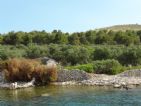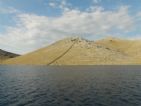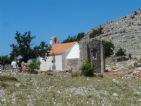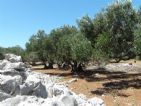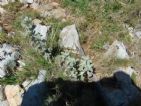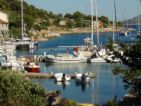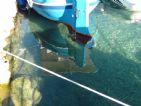
Kornati Islands
23/06/2011 0:49:55
Hello from Korcula!!
We are in a small and wonderful place where almost everything turns around Marco Polo. The legend says that he was born here and, therefore, many touristic businesses reminds us this fact continuously.
We planned the trips of this year, with Helga Schwendinger, we asked ourselves what else could have done the Archduke if he was doing his work nowadays. After some time two marine research projects came to life. One with ther CSIC - Blanes, Rafael Sardà, centered on floating pkastic debris in the mediterranean, and another one with GOB, Gerald Hau, directed on registering sightings of marine mammals.
In a similar direction we decided to do some destinations that were not included in the books of the Archduke. On of them is the Natural Park of the Kornati Islands.
The arrival by sea at the park tells us already that we are reaching a place that is going to be something different. The entry channel is beautiful. The natural park of Kornati is formed by 89 islands and small islands. Is a very arid place but at the same time spectacular. The Bora and Sirocco wind is determinant for the species that live here.
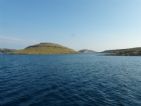
Those islands were exploited by people from other islands, such as Murter, located at around seven miles. On the islands we can see the separations of the different plots of land made out of stone.
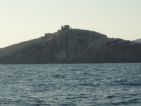
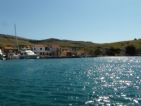
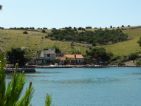
Besides Vrulje we find a small church. We stop by a small creek, and we go walking towards the church. Thus we are able to see also how Kornat, the largest of the islands, is in the interior, and how the pieces of land are exploited.

The little church is placed in a privileged place, and we can see how it has been reconstructed on and besides the ruins of another older church.
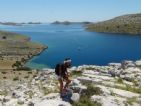
We saw a common thistle, the white steppe (Cistus albidus) and others shrubbery. The hard climate conditions, conditioned the presence of trees. We just saw cultivated trees like olive trees and fig trees. We saw in the fauna, a big butterflies, beetles and reptiles like lizards.
In the underwater world the presence of Posidonia oceanica is determinant for the high diversity of species. A good example is the presence of Pinna nobilis, a biggest mussel of the Mediterranean sea.
At the end of the day we arrive to a little creek, in Smovika Vela, there we find a marvelous restaurant, called Piccolo. Both the time spent in the Kornati and during this last evening at Smovika Vela will be in our mind forever.
Best wishes!!








